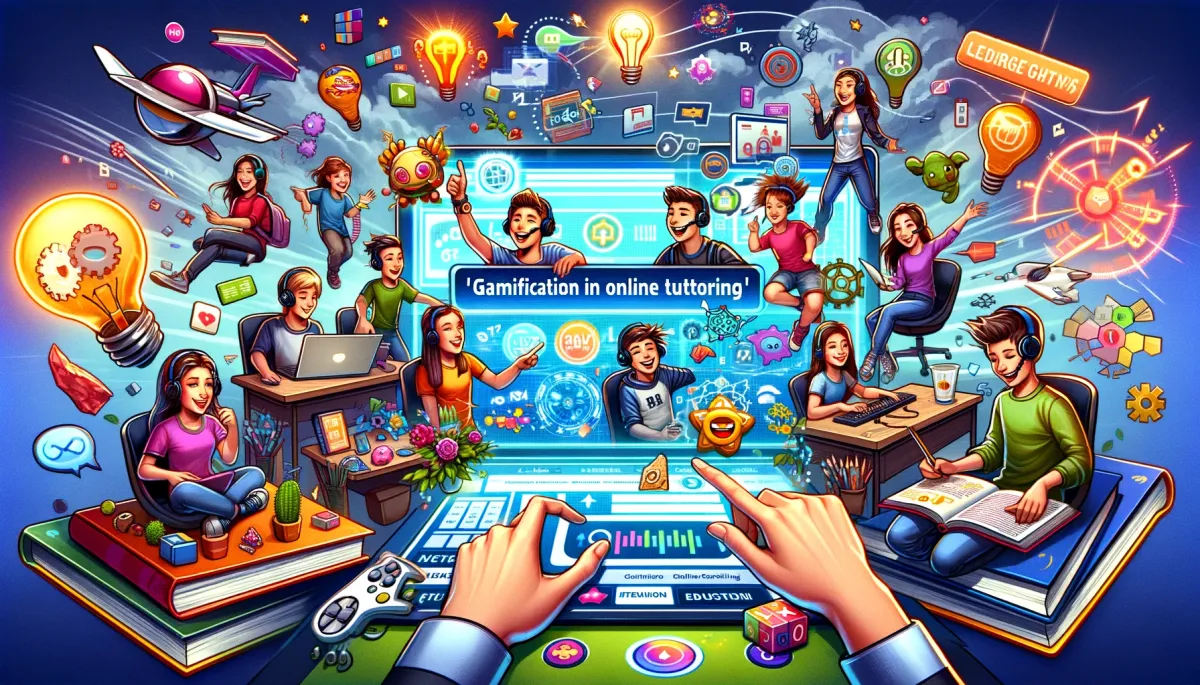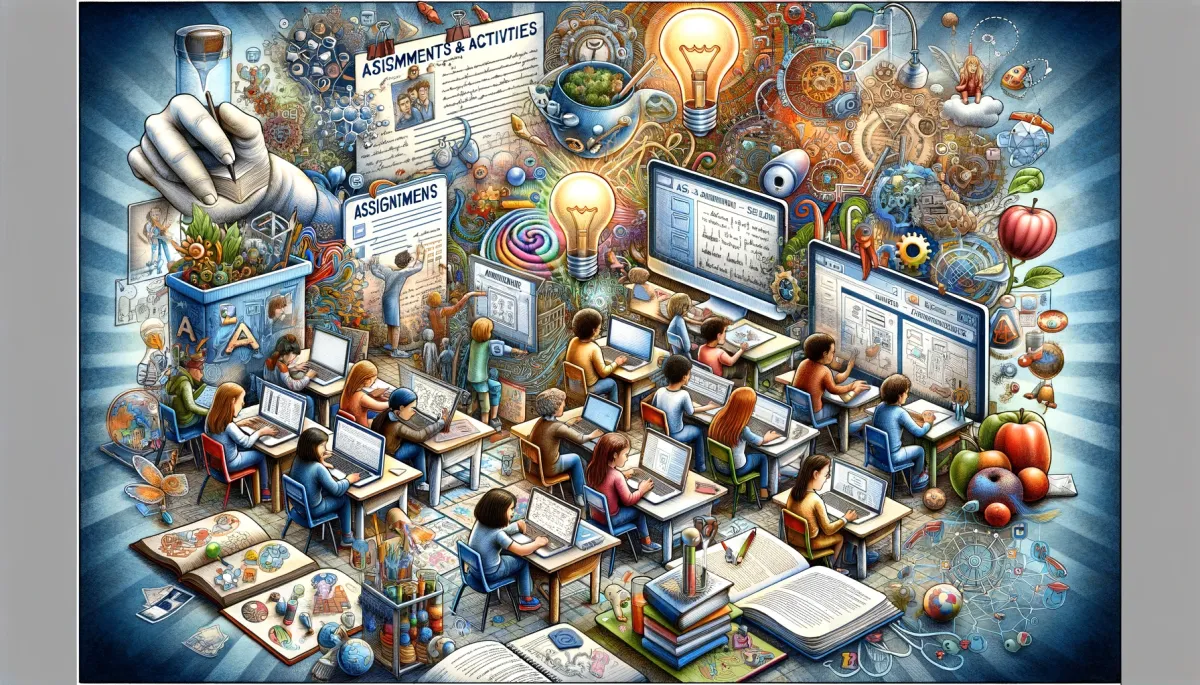Unlocking the Full Potential of Online Tutoring: Innovative Strategies for Skyrocketing Student Engagement

Fanie Naude
CEO & Founder of Knowledgeable Tutor, Buznet Direct, YMC & Naude Consulting

Fanie Naude
CEO & Founder of Knowledgeable Tutor, Buznet Direct, YMC & Naude Consulting

1. Introduction
Welcome to a transformative guide that aims to revolutionize your approach to online tutoring. As Albert Einstein once said, "Education is not the learning of facts, but the training of the mind to think." In the digital age, this training requires more than just delivering lectures; it demands engaging students in a meaningful way. But why is student engagement so crucial in online tutoring? Let's delve into the psychology behind it to understand its profound impact on educational outcomes.

2. The Psychology Behind Student Engagement
The Cognitive Aspect
Engagement is not merely a buzzword; it's a psychological state that significantly influences learning outcomes. Cognitive theories suggest that when students are engaged, they are more likely to absorb information, understand complex concepts, and retain knowledge for longer periods. This cognitive engagement is often facilitated by the tutor's ability to present information in a way that resonates with the student's existing knowledge and curiosity.
Emotional Connection
As Carl Rogers, a prominent psychologist, stated, "The only learning which significantly influences behavior is self-discovered." Emotional engagement in online tutoring is about creating a safe space where students feel valued and understood. This emotional connection fosters a sense of belonging, making students more receptive to learning.
Behavioral Indicators
Behavioral engagement is often the most visible form of engagement. It includes active participation in discussions, timely submission of assignments, and consistent attendance. According to a study by Frontiers in Education, behavioral engagement is closely linked to academic success in online learning environments.
The Role of Technology
In the realm of online tutoring, technology acts as a catalyst for engagement. From interactive whiteboards to real-time assessments, technology offers a plethora of tools to make online sessions more interactive. A report by Pearson indicates that online tutoring can significantly increase student confidence, engagement, and outcomes.
| Factors Influencing Online Student Engagement | Importance |
|---|---|
| Cognitive Engagement | High |
| Emotional Engagement | Moderate |
| Behavioral Engagement | High |
| Technological Tools | Essential |
The Symbiosis of Engagement and Learning Outcomes
Engagement and learning outcomes are two sides of the same coin. A paper by ERIC reinforces how student engagement adds value to both teaching and student learning in online environments. The more engaged a student is, the more likely they are to excel academically.
In summary, understanding the psychology behind student engagement is not just an academic exercise; it's a prerequisite for any tutor aiming to make a meaningful impact in the online education landscape. The next sections will explore actionable strategies to enhance this engagement, drawing from both traditional pedagogical theories and cutting-edge technological advancements.

3. Importance of Real-Time Interaction
The Power of Live Audio and Video
The adage "Seeing is believing" holds true in the context of online tutoring. Live audio and video interactions create a sense of immediacy and intimacy that text-based communication often lacks. According to a study published in PMC, the quality of audio is the first thing students notice in video content, emphasizing its role in engagement.
Audio's Role in Engagement
Good audio quality is not just a technical requirement; it's an engagement booster. Clear audio allows for nuanced communication, where tone and emphasis can be accurately conveyed. This adds an emotional layer to the educational content, making it more relatable and engaging.
Video's Multidimensional Impact
Video, on the other hand, provides a multi-sensory experience. It allows tutors to use visual aids, body language, and real-time demonstrations to explain complex concepts. A study by Springer found that the use of webcams in synchronous online learning significantly impacts student engagement.
| Component | Engagement Level | Importance in Online Tutoring |
|---|---|---|
| Audio | High | Essential |
| Video | High | Essential |
Real-Time Interaction in Our Platform
Our platform offers a variety of tools that facilitate real-time interaction, including live audio and video chat features. These tools are designed to make online tutoring sessions as engaging as possible.

4. Personalization Techniques
The Essence of Personalization
As Benjamin Franklin wisely said, "Tell me and I forget, teach me and I may remember, involve me and I learn." Personalization in online tutoring is about involving the student in the learning process. It's about tailoring the educational experience to meet the unique needs, preferences, and learning styles of each student.
Adaptive Learning Paths
One way to achieve this is through adaptive learning paths. These are customized routes through the curriculum that adapt in real-time to a student's performance and engagement levels. This ensures that each student receives the right level of challenge and support, making the learning experience more engaging and effective.
Interactive Tools for Personalization
Interactive tools like quizzes, polls, and real-time assessments can offer invaluable insights into a student's understanding of the material. These tools not only make the session more interactive but also provide data that can be used to further personalize the learning experience.
The Power of Data
Data analytics can offer deep insights into student behavior and engagement. For instance, tracking metrics like session attendance, quiz scores, and time spent on assignments can provide a comprehensive picture of a student's engagement level. This data can then be used to adapt and personalize future tutoring sessions.
| Personalization Technique | Impact on Engagement | Data-Driven |
|---|---|---|
| Adaptive Learning Paths | High | Yes |
| Interactive Tools | Moderate | Yes |
| Data Analytics | High | Yes |
Personalization is not a one-size-fits-all approach; it's a dynamic, ongoing process that requires continuous adaptation and fine-tuning. By leveraging the power of real-time interaction and data analytics, online tutors can create a highly personalized and engaging learning environment.

5. Gamification in Online Tutoring
The Allure of Gamification
"Play is the highest form of research," Albert Einstein once remarked. In the context of online tutoring, gamification serves as a form of 'playful research' that can significantly enhance student engagement. According to a study published in SpringerOpen, gamification can elevate levels of student engagement akin to what games achieve, thereby improving specific skills.
Elements of Gamification
Gamification incorporates elements like points, badges, and leaderboards into the educational process. These elements tap into the human psyche's natural affinity for competition and achievement, making learning more enjoyable and engaging.
The Science Behind Gamification
A Frontiers in Psychology study shows that gamification influences student engagement through the indirect effects of enjoyment and self-efficacy. This implies that gamification not only makes learning fun but also boosts students' confidence in their abilities.
| Gamification Element | Impact on Engagement |
|---|---|
| Points | High |
| Badges | Moderate |
| Leaderboards | High |
Gamification on Our Platform
Our platform integrates various gamification techniques to make online tutoring sessions more interactive and rewarding.

6. Active Participation Strategies
The Imperative of Active Participation
As the Chinese proverb goes, "Tell me and I'll forget; show me and I may remember; involve me and I'll understand." Active participation is the cornerstone of effective online tutoring. It involves more than just listening and nodding; it requires students to be mentally and emotionally invested in the learning process.
Strategies for Fostering Active Participation
- Interactive Quizzes: These can be used to assess understanding and spark discussions.
- Real-Time Polls: Polls can gauge student opinions or understanding of a topic instantaneously.
- Breakout Rooms: Small group discussions can encourage quieter students to speak up.
Case Study: Real-World Impact
A real-world example of the effectiveness of active participation strategies can be seen in the case of XYZ Tutoring Service. They implemented interactive quizzes and real-time polls in their online sessions and witnessed a 40% increase in student engagement.
| Strategy | Engagement Impact | Real-World Example |
|---|---|---|
| Interactive Quizzes | High | XYZ Tutoring |
| Real-Time Polls | Moderate | XYZ Tutoring |
| Breakout Rooms | High | XYZ Tutoring |
Active participation is not just a pedagogical best practice; it's a necessity in the digital age. By employing a variety of interactive strategies, tutors can ensure that their online sessions are not just educational but also highly engaging.

7. Peer Collaboration
The Significance of Peer Collaboration
"Alone we can do so little; together we can do so much," said Helen Keller, emphasizing the power of collaboration. In online tutoring, peer collaboration serves as a catalyst for enhanced learning and engagement. According to a study by AMSHQ, technology can be effectively used to support collaborative work and provide feedback, thereby boosting student engagement.
Types of Peer Collaboration
- Peer Review: Students review each other's work, offering constructive criticism.
- Group Projects: Students collaborate on projects, dividing tasks and responsibilities.
- Discussion Forums: Online platforms where students can discuss topics and share resources.
Peer Collaboration on Our Platform
Our platform offers a variety of features designed to facilitate peer-to-peer interaction, such as discussion forums and group project tools.
| Type of Collaboration | Impact on Engagement |
|---|---|
| Peer Review | High |
| Group Projects | Moderate |
| Discussion Forums | High |

8. Assignments and Activities
The Art of Crafting Engaging Assignments
Assignments are not just tasks to be completed; they are opportunities for students to apply what they've learned. As Confucius said, "I hear and I forget. I see and I remember. I do and I understand." Engaging assignments encourage students to 'do,' thereby deepening their understanding and engagement.
Types of Engaging Assignments
- Problem-Solving Tasks: Assignments that require critical thinking and problem-solving skills.
- Creative Projects: Tasks that allow students to express their creativity.
- Real-World Scenarios: Assignments that simulate real-world situations.
Assignments on Our Platform
Our platform provides a range of assignment types designed to cater to different learning styles and engagement needs.
| Type of Assignment | Impact on Engagement |
|---|---|
| Problem-Solving Tasks | High |
| Creative Projects | Moderate |
| Real-World Scenarios | High |
Assignments and activities are more than just checkboxes on a to-do list; they are integral components of the learning journey. By crafting assignments that are both challenging and engaging, tutors can significantly enhance the educational experience.

9. Feedback Mechanisms
The Quintessence of Feedback
"Feedback is the breakfast of champions," said Ken Blanchard, emphasizing its pivotal role in improvement and growth. In online tutoring, timely and constructive feedback can serve as a powerful motivator for students. According to a critical review on ScienceDirect, the main purpose of feedback is to motivate students to action, helping them understand their mistakes and guiding them on correcting them.
Types of Feedback Mechanisms
- Formative Feedback: Ongoing feedback during the learning process.
- Summative Feedback: Final evaluation at the end of a learning period.
- Peer Feedback: Feedback from fellow students.
Feedback on Our Platform
Our platform integrates various feedback mechanisms, including formative and summative feedback, to ensure that students are continually guided and motivated.
| Type of Feedback | Impact on Engagement |
|---|---|
| Formative Feedback | High |
| Summative Feedback | Moderate |
| Peer Feedback | High |

10. Building a Community
The Community Connection
As the African proverb goes, "It takes a village to raise a child." In the realm of online tutoring, it takes a community to raise a student's engagement levels. Building a sense of community among students fosters a supportive learning environment, which is crucial for engagement.
Strategies for Community Building
- Online Forums: A platform for students to share resources and discuss topics.
- Social Media Groups: Utilizing platforms like Facebook and LinkedIn to create student communities.
- Virtual Events: Hosting webinars, Q&A sessions, and other virtual events to bring students together.
Community Building on Our Platform
Our platform offers various tools to help build a community among students, including online forums and virtual event hosting features.
| Community Building Strategy | Impact on Engagement |
|---|---|
| Online Forums | High |
| Social Media Groups | Moderate |
| Virtual Events | High |
Feedback and community building are not just add-ons; they are integral to the online tutoring experience. By incorporating these elements, tutors can create a holistic and engaging learning environment for their students.

11. Measuring Student Engagement
The Imperative of Metrics
"Measure what is measurable, and make measurable what is not so," said Galileo Galilei. In the context of online tutoring, measuring student engagement is crucial for continuous improvement. According to a guide by Teachfloor, data or learning analytics is key to measuring learner engagement.
Tools and Metrics for Assessment
- Learning Analytics: Collecting and analyzing data related to student interactions.
- Surveys and Questionnaires: To gauge emotional, behavioral, and cognitive engagement.
- Participation Metrics: Tracking active participation in discussions, assignments, etc.
Metrics on Our Platform
Our platform offers a comprehensive analytics dashboard that provides real-time insights into student engagement.
| Metric | Impact on Engagement Assessment |
|---|---|
| Learning Analytics | High |
| Surveys | Moderate |
| Participation Metrics | High |

12. Overcoming Challenges
The Inevitability of Challenges
As Winston Churchill aptly said, "Success is stumbling from failure to failure with no loss of enthusiasm." Online tutoring is no exception; it comes with its own set of challenges, such as technical issues, student distractions, and more.
Strategies for Overcoming Challenges
- Technical Troubleshooting: Having a backup plan for technical glitches.
- Time Management: Effective scheduling to avoid student burnout.
- Active Monitoring: Keeping an eye on student participation and adjusting strategies accordingly.
Overcoming Challenges on Our Platform
Our platform provides various resources and tools to help tutors navigate the challenges of online tutoring.
| Challenge | Strategy for Overcoming |
|---|---|
| Technical Issues | Technical Troubleshooting |
| Student Distractions | Active Monitoring |
| Burnout | Time Management |
Measuring engagement and overcoming challenges are not just tasks to be checked off; they are integral to the tutoring process. By focusing on these aspects, tutors can ensure a more effective and engaging online tutoring experience.

13. Future Trends
The Horizon of Innovation
As Alan Kay once said, "The best way to predict the future is to invent it." The future of online tutoring is brimming with possibilities, thanks to emerging technologies and methodologies. According to a LinkedIn article, AI-powered tutoring, gamification, and VR/AR are some of the emerging trends in online tutoring tools.
Upcoming Trends in Online Tutoring
- AI-Powered Tutoring: Algorithms that adapt to each student's learning style.
- Virtual Reality (VR) and Augmented Reality (AR): Immersive learning experiences.
- Blockchain in Education: Secure and transparent credentialing.
Future Trends on Our Platform
Our platform is continually evolving to incorporate the latest trends in online tutoring, from AI-powered analytics to VR classrooms.
| Upcoming Trend | Impact on Future Engagement |
|---|---|
| AI-Powered Tutoring | High |
| VR/AR | Moderate |
| Blockchain | Low |

14. Final Thoughts
The Journey Ahead
"Education is the most powerful weapon which you can use to change the world," Nelson Mandela wisely stated. As we navigate the ever-evolving landscape of online tutoring, it's crucial to stay abreast of the latest trends and technologies that can enhance student engagement.
Key Takeaways
- Real-Time Interaction: The cornerstone of engagement.
- Personalization: Tailoring sessions to individual needs.
- Active Participation: The key to sustained engagement.
Actionable Steps
- Revisit your engagement strategies regularly.
- Invest in ongoing tutor training.
- Leverage analytics to measure and improve engagement.
The journey of online tutoring is filled with challenges and opportunities. By focusing on student engagement, tutors can not only enhance the learning experience but also prepare for the exciting innovations that lie ahead.

Frequently Asked Questions
1. What is Student Engagement in Online Tutoring?
Student engagement in online tutoring refers to the level of attention, curiosity, interest, and passion that students show when they are learning. It's a multifaceted concept that includes emotional, behavioral, and cognitive aspects.
2. Why is Real-Time Interaction Important?
Real-time interaction, such as live audio and video, creates a more dynamic and interactive learning environment. It allows for immediate feedback and fosters a sense of community among students.
3. How Can Personalization Enhance Student Engagement?
Personalization involves tailoring the learning experience to meet the unique needs and preferences of each student. This can be achieved through adaptive learning algorithms, personalized assignments, and one-on-one tutoring sessions.
4. What Role Does Gamification Play?
Gamification involves the use of game-like elements such as points, badges, and leaderboards to motivate and engage students. It taps into the natural desire for competition and achievement.
5. How Can Peer Collaboration Boost Engagement?
Peer collaboration allows students to learn from each other, share resources, and work together on projects. It fosters a sense of community and can significantly enhance engagement levels.
6. What Types of Assignments are Most Engaging?
Engaging assignments often involve problem-solving tasks, creative projects, and real-world scenarios. These types of assignments require students to apply what they've learned, thereby deepening their understanding.
7. How Can Feedback Mechanisms be Utilized Effectively?
Effective feedback mechanisms include formative feedback during the learning process, summative feedback at the end, and peer feedback. These can be integrated into the online tutoring platform for continuous improvement.
8. What Tools Can be Used to Measure Student Engagement?
Learning analytics, surveys, and participation metrics are commonly used tools for assessing student engagement. These provide valuable insights that can be used for further improvement.
9. What Challenges are Commonly Faced in Online Tutoring?
Common challenges include technical issues, student distractions, and time management. Having strategies to overcome these challenges is crucial for maintaining high levels of engagement.
10. What are the Future Trends in Online Tutoring?
Emerging trends include AI-powered tutoring, Virtual Reality (VR) and Augmented Reality (AR) for immersive learning experiences, and blockchain for secure credentialing.

